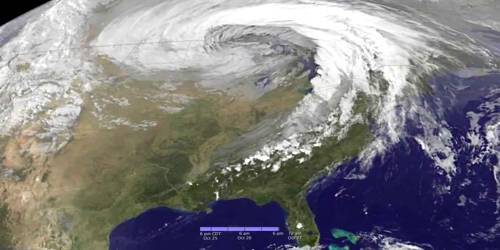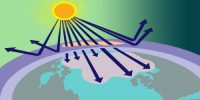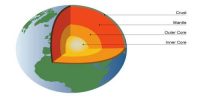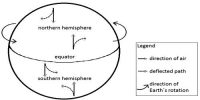Extra Tropical Cyclones
The systems developing in the mid and high latitude, beyond the tropics are called the middle latitude or extra tropical cyclones. The passage of front causes abrupt changes in the weather conditions over the area in the middle and high latitudes.
Extra tropical cyclones form along the polar front. Initially, the front is stationary. In the northern hemisphere, warm air blows from the south and cold air from the north of the front. When the pressure drops along the front, the warm air moves northwards and the cold air move towards, south setting in motion an anticlockwise cyclonic circulation. The cyclonic circulation leads to a well developed extra tropical cyclone, with a warm front and a cold front. The plan and cross-section of a well-developed cyclone are given in Figure. There are pockets of warm air or warm sector wedged between the forward and the rear cold air or cold sector. The warm air glides over the cold air and a sequence of clouds appear over the sky ahead of the warm front and cause precipitation. The cold front approaches the warm air from behind and pushes the warm air up. As a result, cumulus clouds develop along the cold front. The cold front moves faster than the warm front ultimately overtaking the warm front. The warm air is completely lifted up and the front is occluded and the cyclone dissipates.
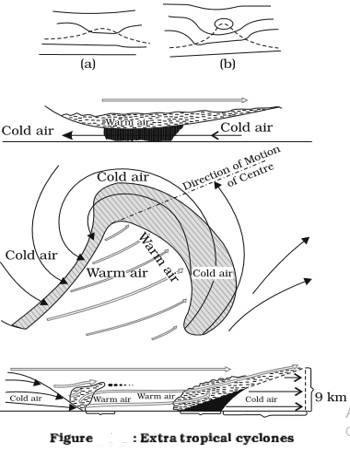
The processes of wind circulation both at the surface and aloft are closely interlinked. The extra tropical cyclone differs from the tropical cyclone in a number of ways. The extra tropical cyclones have a clear frontal system which is not present in the tropical cyclones.
They cover a larger area and can originate from the land and sea. Whereas the tropical cyclones originate only over the seas and on reaching the land they dissipate. The extra tropical cyclone affects a much larger area as compared to the tropical cyclone. The wind velocity in a tropical cyclone is much higher and it is more destructive. The extra tropical cyclones move from west to cast but tropical cyclones, move from east to west.
